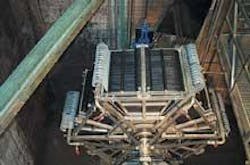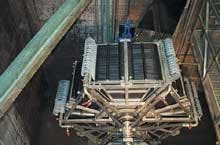Membrane process designed for biological treatment
The Schwägalp sewage treatment plant in Switzerland, equipped with the Huber VRM® system, reduces eutrophication-causing pollutants in surface waters. Initial operations at this plant resulted in a COD reduction of 96.6% and a NH4-N reduction of 99.99%. The VRM uses a new variable clarification system that generates high-flow velocities on membrane surfaces. The biologically clarified permeate is won directly from the aeration tank by suction.
In cooperation with Martin Systems AG, Hans Huber AG developed the process to meet anticipated legislation and minimise operating costs. The submerged and sequentially cleaning UF process treats wastewater from a cheese dairy, alpine hotel and guesthouse.
The difference between the membrane process and classical filtration is its smaller separation size of approximately 38 nm and the transmembrane pressure difference required as a driving power. The membranes retain all bacteria (size 500 to 4,000 nm, ten times the design separation size) and virtually all viruses (size 20 to 300 nm).
Suitable applications range from aeration tanks, which makes a secondary clarifier, sand filtration and disinfection unnecessary, via secondary filtration of STP effluents or potable water treatment to various industrial applications.
Hans Huber AG
Germany

